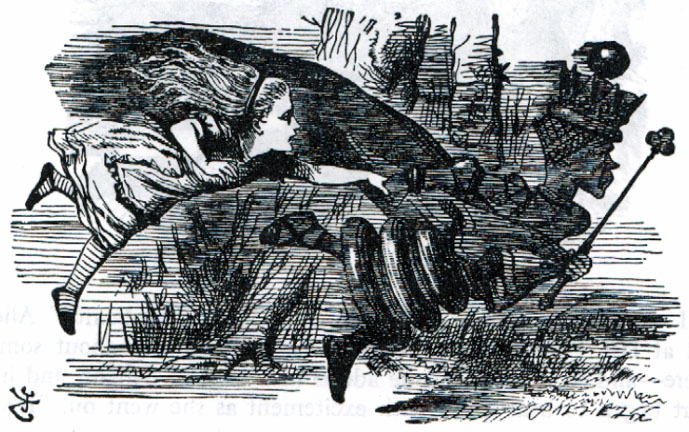"... my best estimate is that a full thirty percent of the market's current "value" is based upon fraud and deception, and not on actual value"
... says Genesis (Karl Denninger) on his site, Market Ticker yesterday. He has already organised a petition, and is now calling for a shatteringly large class-action suit against American banks.
*** FUTURE POSTS WILL ALSO APPEAR AT 'NOW AND NEXT' : https://rolfnorfolk.substack.com
Saturday, November 03, 2007
"Dow 9,000" prediction: accelerating decline
November 2: Dow at 13,595.10, gold $806 per ounce. Since July 6, Dow has appeared to hold its ground, but the "gold-priced Dow" has dropped to 10,925.83 - a fall of over 49% annualised. And at this rate, gold will have doubled in dollar terms by July 2008.
China Olympics: Starter's Gun For Inflation
Robert Gottliebsen in Australia's Business Spectator (Thursday) gives thanks for Ben Bernanke's inflationary rescue of the banking system, but points out that the flight from devaluing US securities is driving demand for assets elsewhere. And there are longer-term consequences to face:
Before the latest US crisis developed my friends in China told me that many Chinese manufacturing businesses would try to raise prices by 10 per cent in 2008 -- probably after the Olympics. That determination will now be intensified because the manufacturers are not only receiving lower returns but are being forced to pay more for oil and commodities. Those seeking shelter from the US dollar will drive up prices.
Bernanke’s actions, even though they are justified, are going to inflame US inflationary pressures. So later in 2008 and in 2009 he will need to reverse the current process and increase interest rates. That will not be good for stock markets or commodities because it will reverse the current forces. But just how serious it will be for the US will depend on whether the current Bernanke medicine worked and the banking breakdown was repaired.
I think there is a chance it will work because rising stock markets are a powerful drug. But no one can be certain, and this is a very dangerous period.
Friday, November 02, 2007
Twang money - again
Fiat currency can be expanded at will, but in a credit crunch can contract as easily, so I've previously nicknamed it "twang money". But it turns out there actually once was a medium of exchange known as "twang money" - the Hungarian pengo. It ended up as the worst case of inflation in history: someone writes in to today's Daily Mail (page 77) to say that by 1946, all the Hungarian banknotes in circulation, taken together, were worth one-thousandth of a US cent.
However, consider the potential uses of many tons of durable paper with run-resistant colours: wallpaper, sweet wrappers, firelighters... So for me, the story is about the buying opportunity when pessimism ignores intrinsic value.
The Clashing Rocks
It's said that the Chinese pictogram for "crisis" combines the ideas of "threat" and "opportunity". Hutchinson offers ideas for those who want to take advantage: invest in...
- Japan
- gold
- natural resources
- Canadian oil
- - and a Korean bank.
Thursday, November 01, 2007
"Wall of Worry" poll results
It seems respondents are as much confused as I am, about which way to go. I quoted Benjamin Graham's advice for passive investors, which is to strike some balance between equities and high-quality bonds, anywhere from 25:75 to 75:25, with a default position of 50:50.
The results are almost exactly divided: 8 at the top end for equities, 8 at the bottom for bonds, 7 voting for a 50:50 split, and one for 65% equities/35% bonds.
The results are almost exactly divided: 8 at the top end for equities, 8 at the bottom for bonds, 7 voting for a 50:50 split, and one for 65% equities/35% bonds.
Another snort to keep going
Chris Ciovacco in SafeHaven today reads the historical charts and concludes that recent multiple Federal Reserve rate cuts are slightly bullish indicators:
... From my perspective, almost all the items above slightly favor the reflation trade over gloom-and-doom. However, the edge is small enough to remain diversified while keeping a close eye on the stock market's 50 and 200-day moving averages.
This would chime with Jim Puplava's assessment that "more of the same" will buy us a little more time until the system is exhausted, which he expects to happen around 2009 onwards.
... From my perspective, almost all the items above slightly favor the reflation trade over gloom-and-doom. However, the edge is small enough to remain diversified while keeping a close eye on the stock market's 50 and 200-day moving averages.
This would chime with Jim Puplava's assessment that "more of the same" will buy us a little more time until the system is exhausted, which he expects to happen around 2009 onwards.
Subscribe to:
Posts (Atom)
